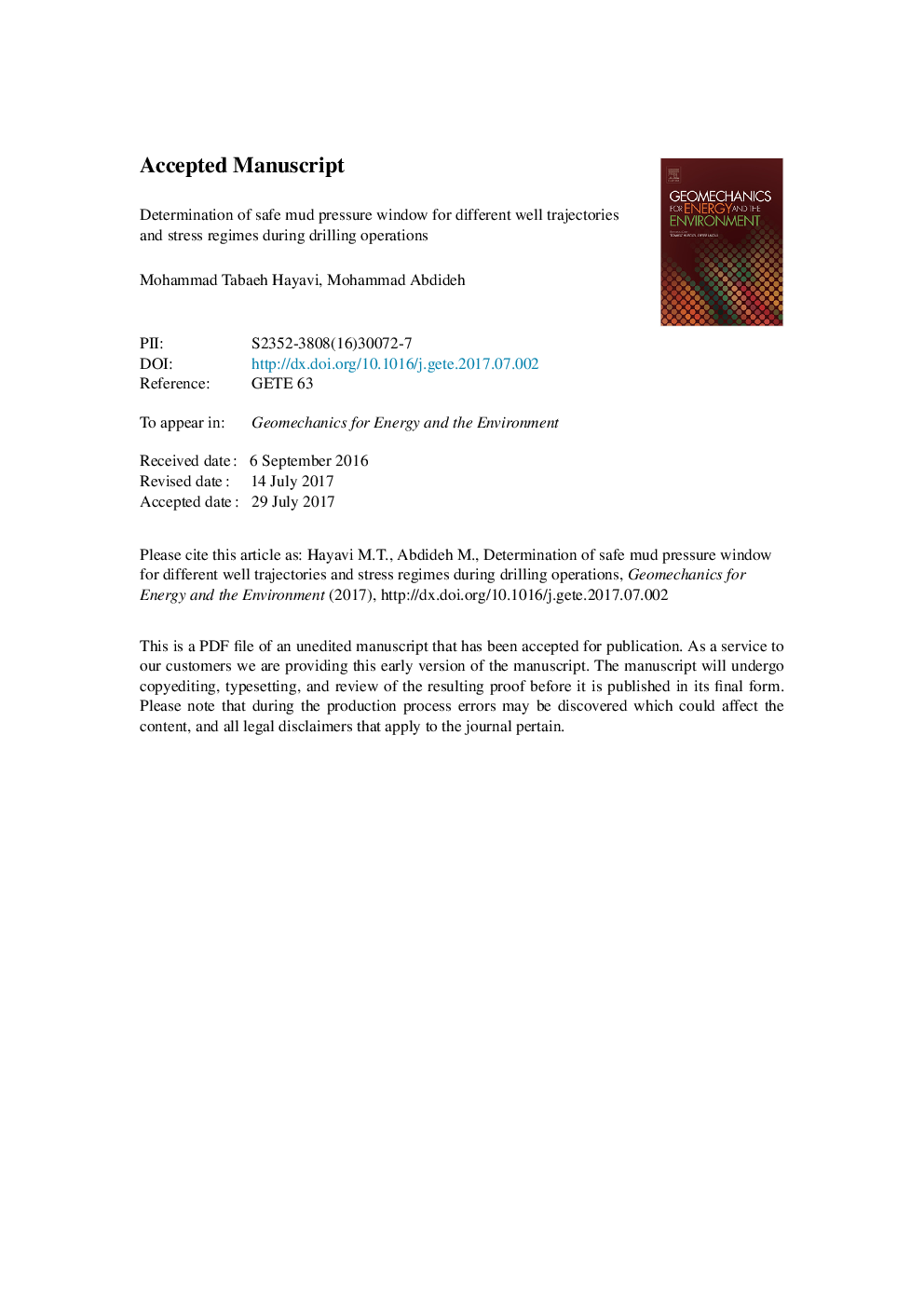| Article ID | Journal | Published Year | Pages | File Type |
|---|---|---|---|---|
| 4921501 | Geomechanics for Energy and the Environment | 2017 | 28 Pages |
Abstract
Wellbore stability is one of the crucial issues in oil and gas industries. The issues related to instability of wells, impose significant unwanted costs on drilling operation. Several studies have been undertaken about borehole stability and optimized wellbore direction. However, the majority of them are focused on shear and tensile failures induced instability separately. and there are Only a few studies address with these two failures induced borehole instability during drilling simultaneously. The objective of this paper is to determine the safe mud pressure window required to stabilize the wellbore in different well trajectories and in-situ stress regimes during drilling operation using the Hubbert-Willis and 3D Hoek-Brown criteria. The results indicate that in different in-situ stress regimes, the inclination and azimuth have a significant role in wellbore stability during drilling. It was found that, the most stable drilling direction is along the minimum horizontal stress for the extensional stress regime, while it is along the maximum horizontal stress in the strike-slip and compressional stress regimes. Furthermore, for the extensional, strike-slip and compressional stress regimes, the most stable path are respectively: deviated, horizontal, and again horizontal. Such borehole stability analysis plays an important role in the design of oil and gas well drilling.
Related Topics
Physical Sciences and Engineering
Earth and Planetary Sciences
Geotechnical Engineering and Engineering Geology
Authors
Mohammad Tabaeh Hayavi, Mohammad Abdideh,
